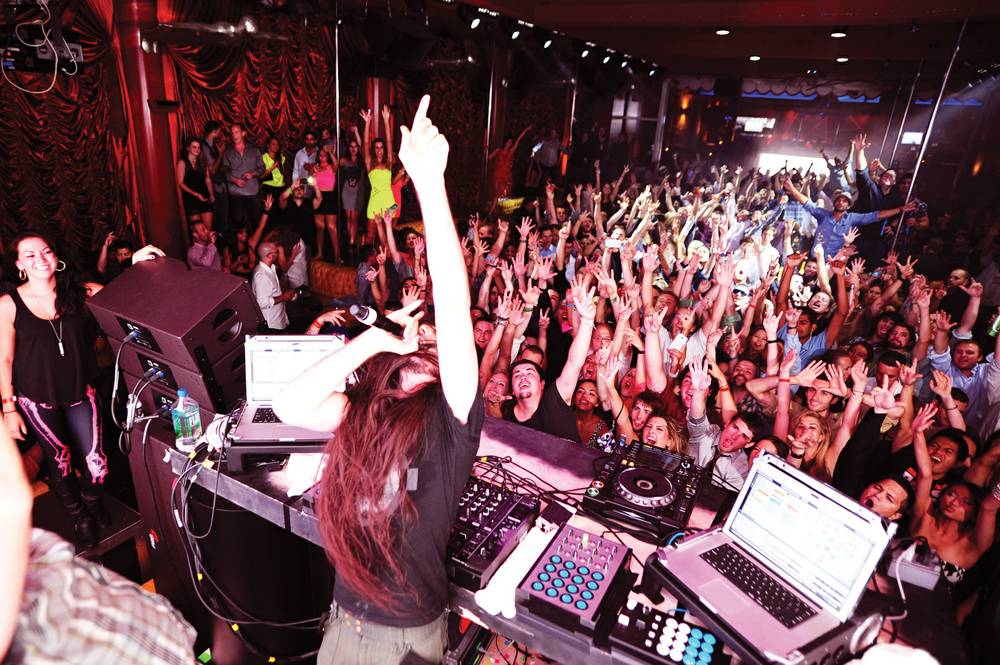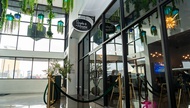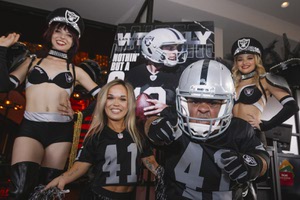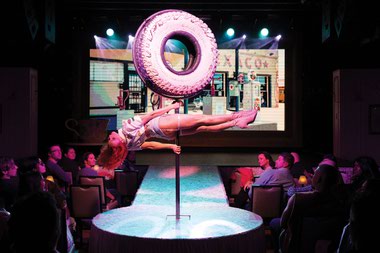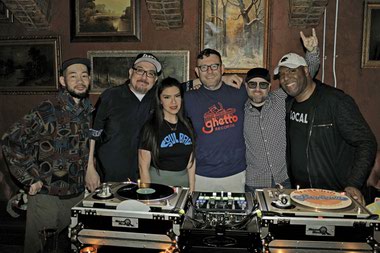The national media has another reason to treat Las Vegas as its punching bag. As if we weren’t uncultured enough, obnoxious enough or foreclosing our homes enough, now we’re apparently destroying dance music, too.
In the September 30 issue of The New Yorker, writer Josh Eells breaks down our lucrative nightclub scene, using XS nightclub and its resident DJ, Dutch producer Afrojack, as the central players. It’s as much a look into how commercialized electronic dance music, or EDM, has pervaded both pop culture and Las Vegas as it is a barometer of Strip economics. Though fair and well-reported, it has the underlying tone that we’re peddling hastily made music to drunken tourists and one-percenters, while justifying six-figure DJ fees in the name of higher profits and cutthroat competition.
More troubling is how Eells’ piece has inspired commentary that more explicitly lambastes Las Vegas, also from the New York press, predictably coloring its tourist journalism with the obligatory descriptions of sluts and bros (who may or may not hail from Los Angeles, another favorite target of Gotham scribes). Some of those pieces have valid criticisms—most I’ve posited for years. Maybe I’m finally resigned to many of our compromises and shortcomings. Or, maybe I have developed a perspective these fly-in writers can’t or haven’t.
Much is made about the megaclubs’ dependence on table service to accomplish those million-dollar nights. It’s been a sticking point for many traditional clubbers and budget-conscious partiers since the early 2000s, when Andrew Sasson more or less introduced European bottle service at the first Light Nightclub, where the Bank sits now at Bellagio.
Booths requiring the purchase of at least one $500 liquor bottle make up most of a nightclub’s real estate, but they also subsidize the extravagant decor, the world-class sound systems and, of course, the headlining talent that makes our scene such an enormous draw. It’s also redefined the Vegas experience for the new generation of visitors—instead of blowing thousands on the felt tables, twentysomething tourists spend their dough on reserving the ones that allow them a greater sense of escapade. And for those who weren’t here during the crippling recession: Bottle-hawking ultimately fed the casinos’ bottom lines from 2008 to 2010.
Expensive liquor sales, of course, suggest that Vegas is a playland of the rich, which is particularly galling to the East Coast peanut gallery given that house music originally came from lower-income communities. Individual ticket sales can also get expensive, up to $100 on a holiday weekend to see Top 40 dominator Calvin Harris at Hakkasan. However, on September 26, clubbers were able to catch Harris with well-known EDM names Nervo and Danny Avila for $30. Anyone that wants can get in, provided the club isn’t at capacity. That’s pretty egalitarian compared to New York City, which remains notoriously exclusive when it comes to those behind the velvet rope.
And included in that ticket is a level of production no other American club scene could attempt, let alone offer. Say what you will about the visual bombast and how it distracts from the music—and I have—but to live with the Strip nightlife scene is to live with the acceptance that Vegas is about spectacle. We don’t do minimal, and that’s a lure to millions of vacationers.
The Strip also doesn’t favor the underground; even progressive house has a limited appeal, much to this music fan’s chagrin. Given we’re a mirror of national tastes and subsequently cyclical in programming, that will only change when the broader dance music culture does. When Gawker refers to Vegas nightlife as “crassly commercial,” it seemingly overlooks the Vegas part, and the fact it has always been unabashedly mainstream. Some New York clubbers I’ve spoken to say our unique immersive presentation of dancefloor pop is a welcome contrast to the pretension they experience back home.
We get it: Bandwagoning drunkards from flyover country and Orange County are the new Strip fannypackers. And dance music diehards hold their culture sacred; to an extent, I relate. But opportunistic forces have been at work for years: consider major label electronica, the first massive events and European trance rubbing the African-American roots out of house and techno. Vegas might have a part in EDM fatigue, but it can’t be scapegoated for EDM itself.
I recall watching David Guetta mix R&B vocals and Euro-house production together back in 2007—but it wasn’t here. He hadn’t even played here yet. It was at Cielo, a revered club in New York City, which seemed pretty damn enamored of him at the time. I didn’t hear him being skewered by the press until a few years later, once he had hits—and a million-dollar contract in Las Vegas.
Which gets us back to the DJ residency phenomenon. We know it’s unsustainable; as Eells points out, clubs are already strategizing by searching for the new up-and-comers, which will be a welcome evolutionary step. And of course it’s ridiculous. But so is Las Vegas. And the 42 million people we annually welcome and ultimately answer to wouldn’t have it any other way.
